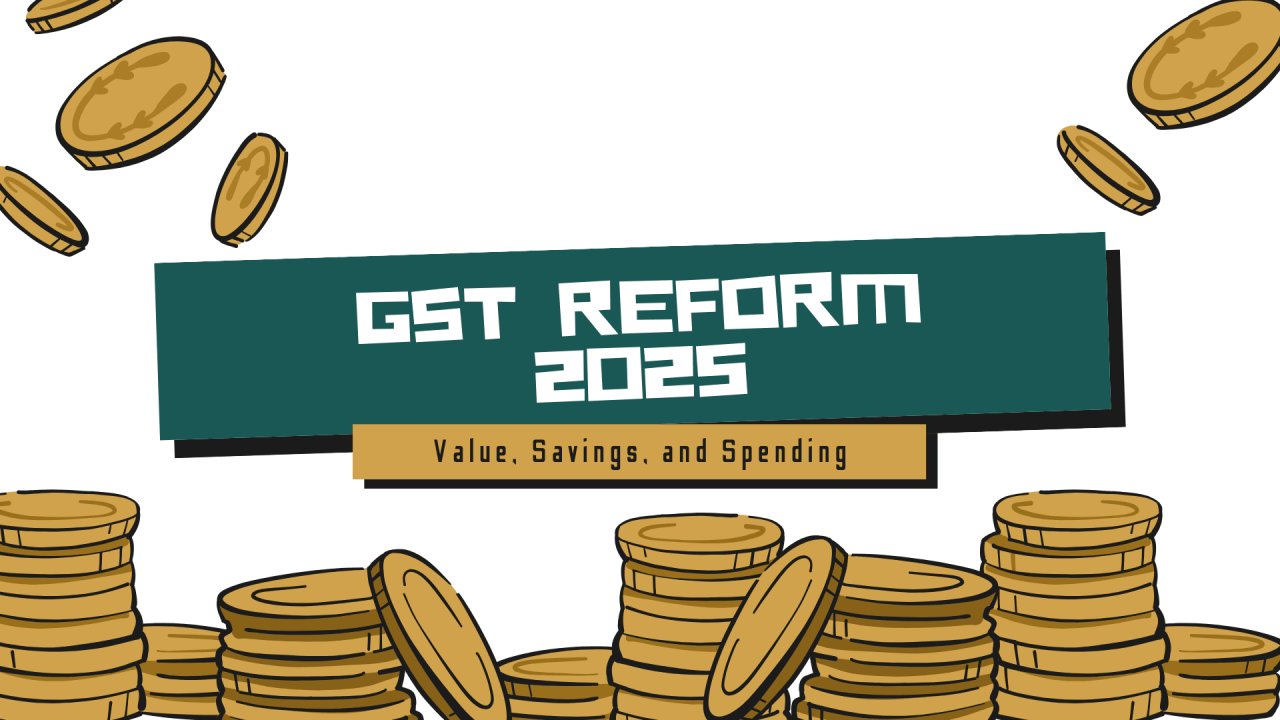GST Reform 2025: A Game-Changer for Consumers and Businesses

GST Reform 2025 - Signals a New Era of Economic Simplicity in India
India has entered a new phase in its tax reform journey with a massive reallocation of the Goods and Services Tax (GST) rates. The latest announcement brings major rate reductions across essential sectors including insurance, consumer durables, cement, and auto. While the changes are being viewed as economic relief for the public and businesses, they also signal a long-term shift toward simplifying the tax structure of India.
More Than Just a Rate Change
At first glance, the reforms may appear to be as a technical adjustments. However, the broader economic impact is significant by the time. Much like earlier historic reforms, these GST changes are expected to strengthen compliance, boost consumption, and lead to higher long-term revenue collection. The idea of “revenue loss” due to lower tax rates has been described as a short-term view. As more businesses comply and consumers spend more, collections are expected to bounce back within 6 to 8 months. This makes the reform not just a tax update, but a strategic move to the growth.
Key Sector Highlights
1. Insurance
A major relief comes in the form of zero GST on life and health insurance premiums for individuals. This brings down the cost of essential financial protection products and makes them more accessible to the average citizen. The full implications on listed insurance companies and the broader industry will become clearer in the coming days.
2. Consumer Durables
The household segment sees one of the most consumer-friendly moves in this reform. Products like TVs, air conditioners, washing machines, dishwashers, and other everyday appliances have gone through a significant GST cuts. This is an acknowledgement by the govt that these are no longer luxury items, but basic necessities in modern time/ homes.
The reduced tax burden is expected to encourage demand in the market, but the inmplementation by the companies to the consumer is pending to be seen.
3. Cement
The cement industry has received a direct GST cut. This move is expected to boost the construction and infrastructure sector by lowering costs of goods. The effect could also extend to housing for making the real state affordable.
4. Auto Sector
In this reform, the auto sector got a mixed outcome. Larger vehicles such as cars above 1200cc and bikes above 350cc continue at higher taxes. This is likely to impact some manufacturers and the customers as well.
Simplifying the Tax Structure
The clearer tax rates are the biggest improvements in this reform. Earlier, there was confusion about how much tax to charge on some items—like certain food products should be taxed at 5% or 18%. Now, many of these items are placed clearly under 0% or 5% GST.
Common food items like paneer, Indian breads, sauces, snacks, and packaged foods are now at 0 tax or as less as possble. This means people can save more on everyday purchases.
Overall, the new tax structure is easier to understand and simpler for both businesses and consumers.
Will the Benefits Reach the Consumer?
There remains a valid question—will companies pass on these tax cut benefits to consumers? The government thinks that companies will lower prices on their own because of competition and after the tax relief. Also, government teams will keep a close watch to make sure the tax cuts actually reach to the customers.
A Turning Point in India’s Tax Evolution
This GST reform is not just about lowering rates—it’s about restoring public trust, simplifying the tax structure, and making the system more efficient. By addressing consumer pain points and bringing clarity to the tax structure, India is making a strong move toward economic transparency and long-term stability with their Finance. Let's see how much actual benifits we get?




